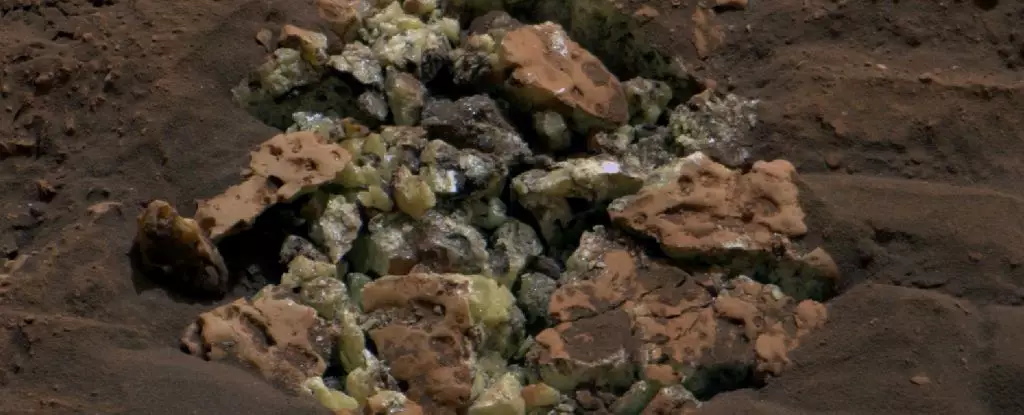In a surprising turn of events, NASA’s Curiosity rover on Mars stumbled upon a yellow treasure hidden inside a seemingly ordinary rock. After inadvertently breaking open the rock, the rover exposed yellow crystals of elemental sulfur, a rare find on the red planet. While sulfates have been detected on Mars before, this marks the first time that pure sulfur in its elemental form has been discovered. The discovery took place in the Gediz Vallis Channel, a region known for its abundance of rocks that closely resemble the sulfur-containing rock that was cracked open by Curiosity.
Elemental sulfur is a crucial element with various implications for understanding the geological and potentially biological history of Mars. Sulfates, which are formed when sulfur interacts with other minerals in water, can provide valuable insights into the planet’s past water activity and environmental conditions. However, pure sulfur only occurs under specific conditions, raising questions about the geological processes that led to its presence in the Gediz Vallis Channel. The abundance of elemental sulfur hints at significant undiscovered aspects of Mars’ history, prompting scientists to delve deeper into the mystery.
Sulfur plays a vital role in the biological processes of living organisms, serving as a key component in essential amino acids needed for protein synthesis. While the discovery of pure sulfur does not directly indicate the presence of life on Mars, it underscores the planet’s potential habitability in the past. By uncovering remnants of substances essential for life, such as water and chemistry, researchers are gradually piecing together the puzzle of Mars’ ancient environment. Although the search for definitive signs of life continues, each new discovery contributes to a broader understanding of the planet’s potential for supporting life.
Exploring the surface of Mars poses numerous challenges for scientific investigation. Limited by distance and technological constraints, researchers rely on rovers like Curiosity to collect data and analyze samples remotely. The accidental discovery of elemental sulfur highlights the unpredictable nature of planetary exploration, where unexpected findings can lead to groundbreaking revelations. As Curiosity continues to traverse the Gediz Vallis Channel, scientists will conduct further analyses to unravel the mysteries surrounding the origin of sulfur on Mars.
Moving forward, researchers aim to explore the geological evolution of Mars to determine how elemental sulfur came to be deposited in the Gediz Vallis Channel. This endeavor may involve in-depth modeling of Mars’ geological history and environmental conditions to piece together the puzzle of this unique discovery. While Curiosity continues its mission to gather data along the ancient waterway of Gediz Vallis, scientists remain eager to uncover additional surprises that may shed light on the planet’s enigmatic past.


Leave a Reply